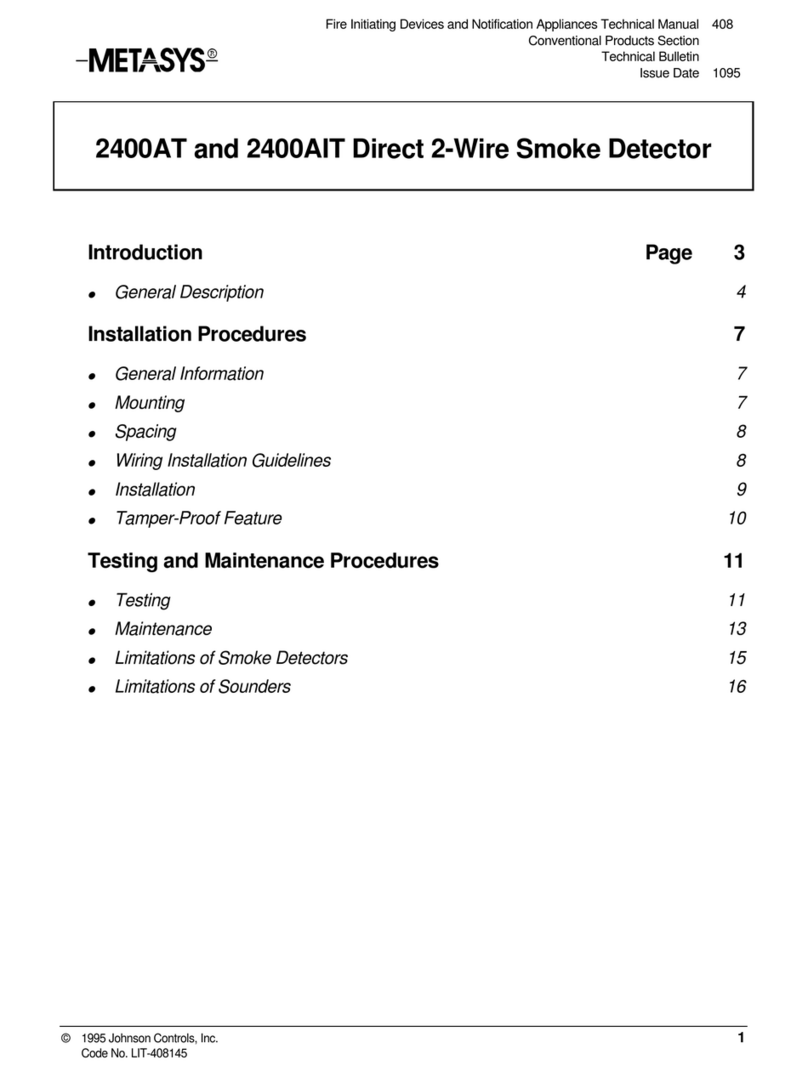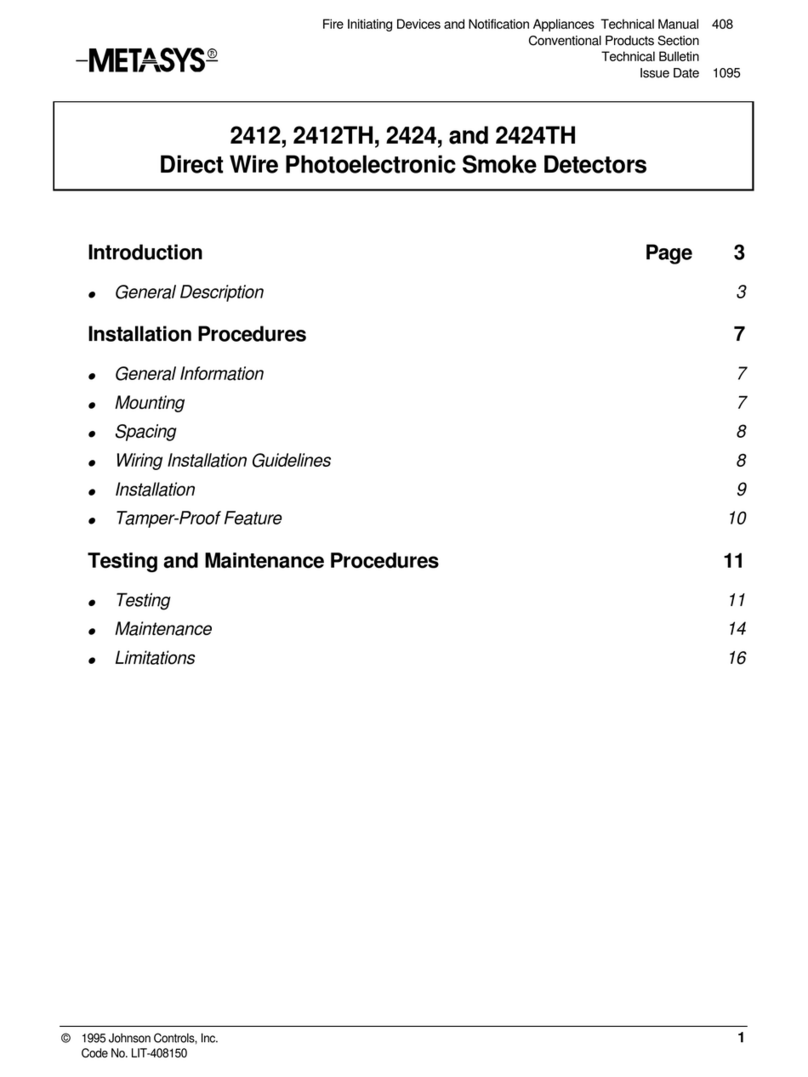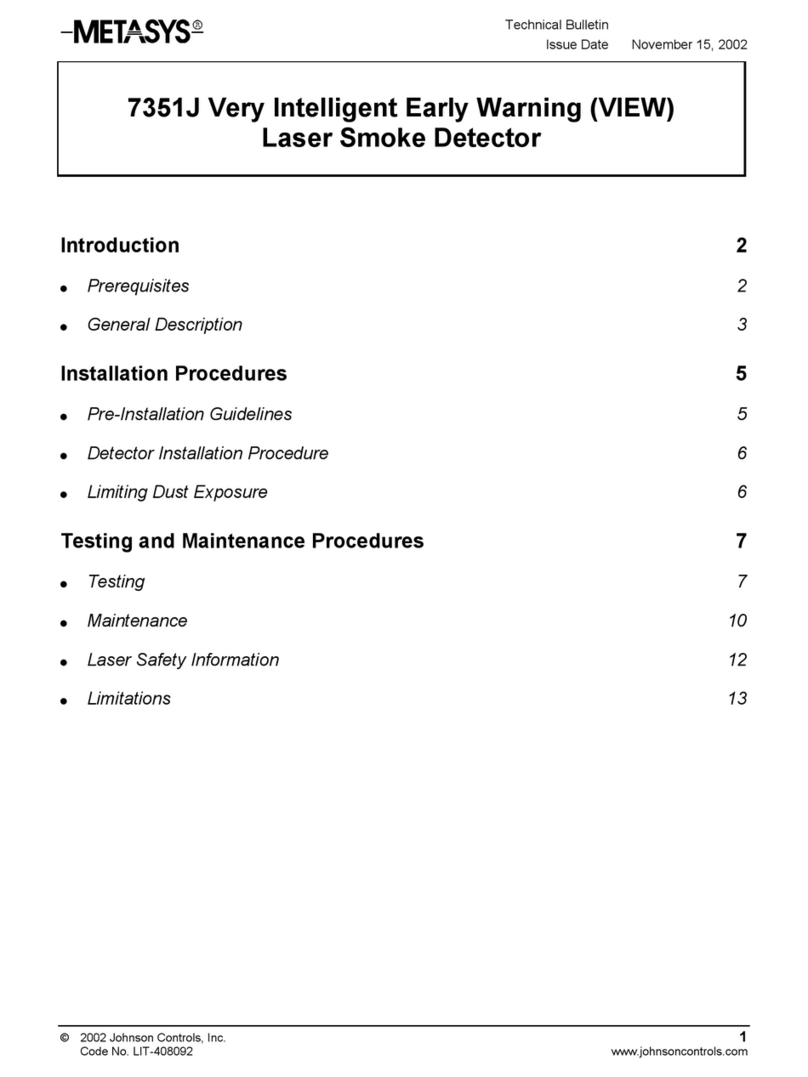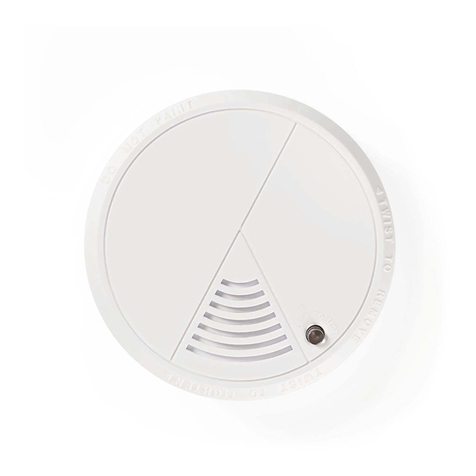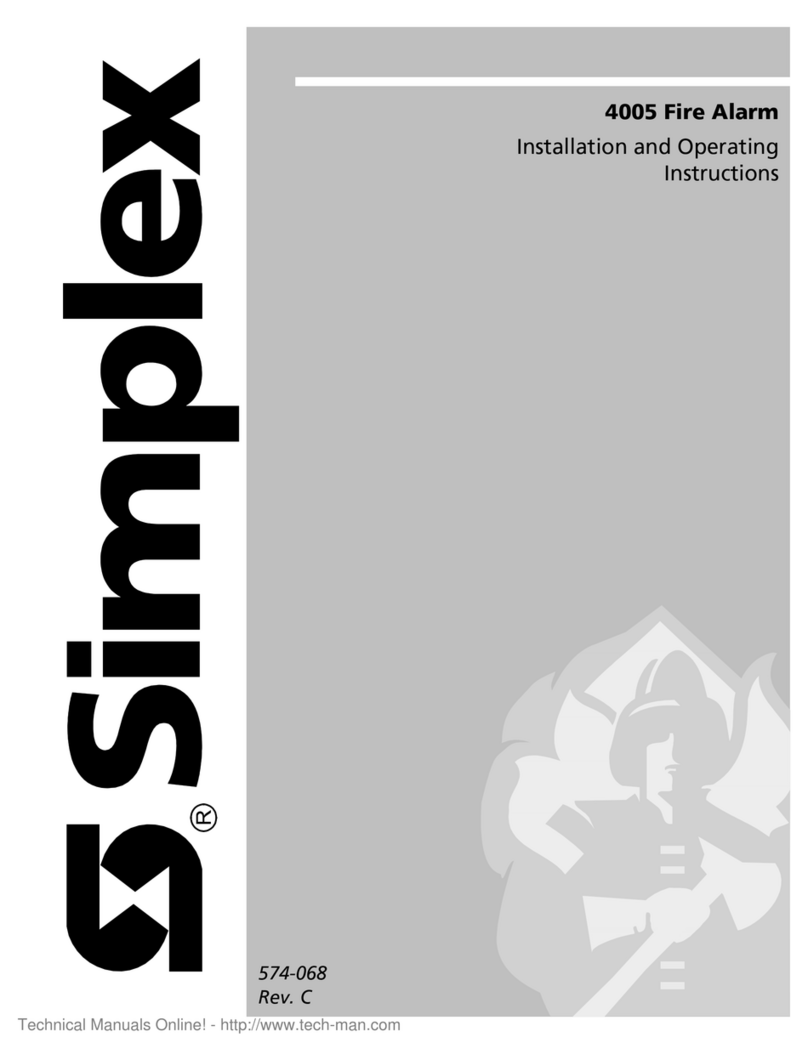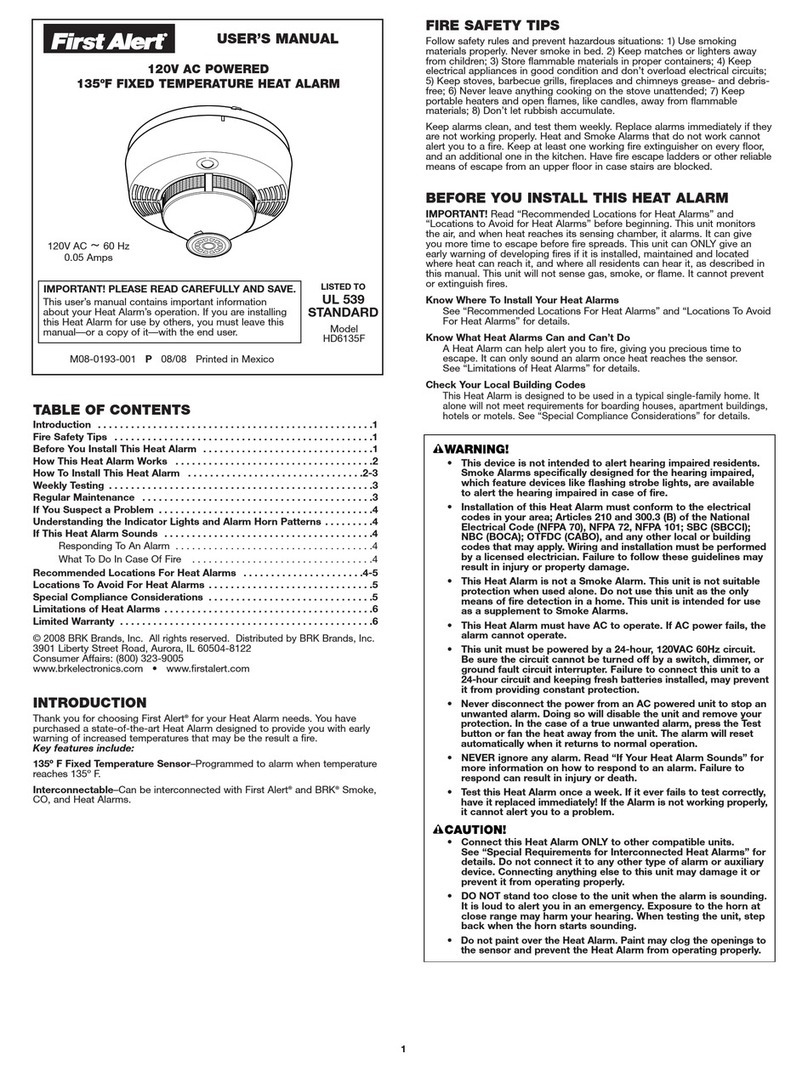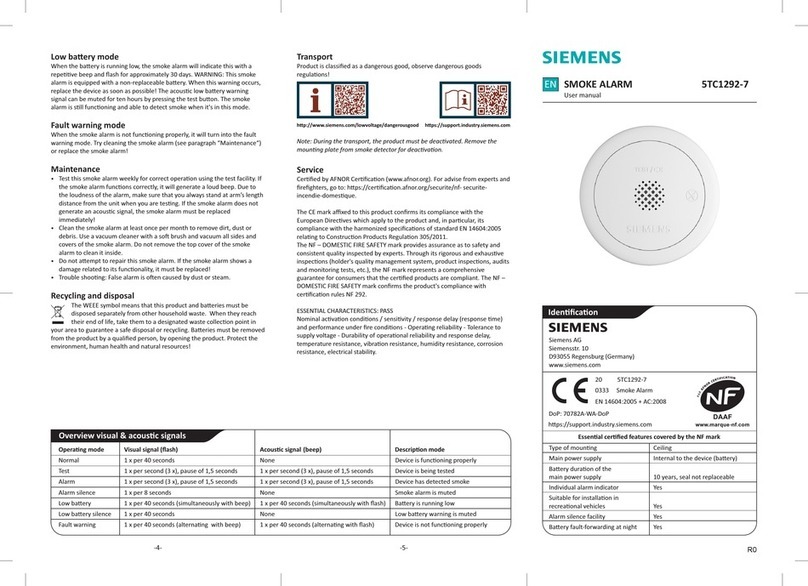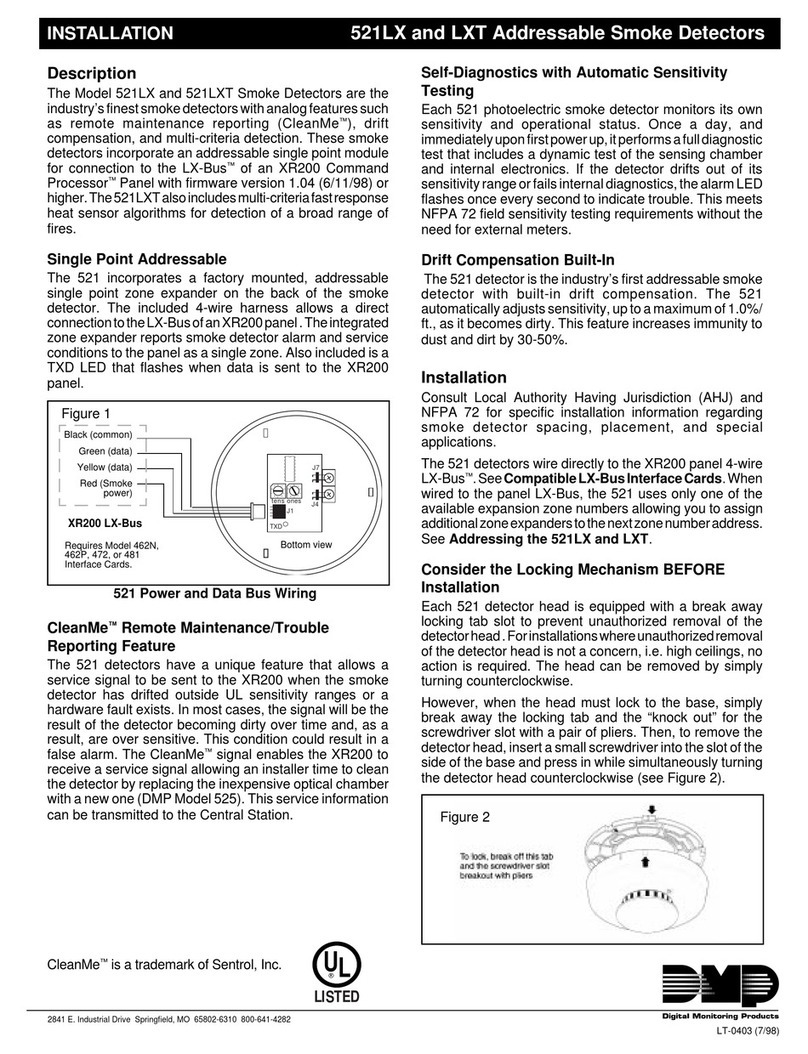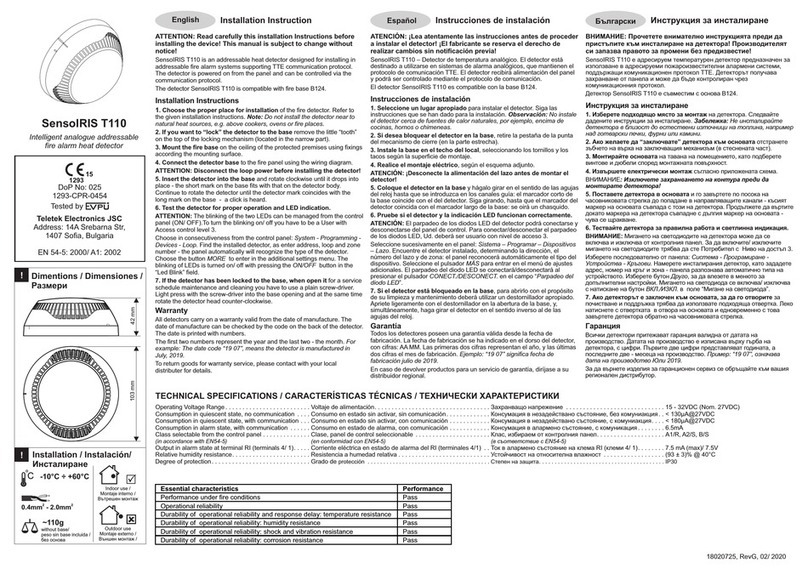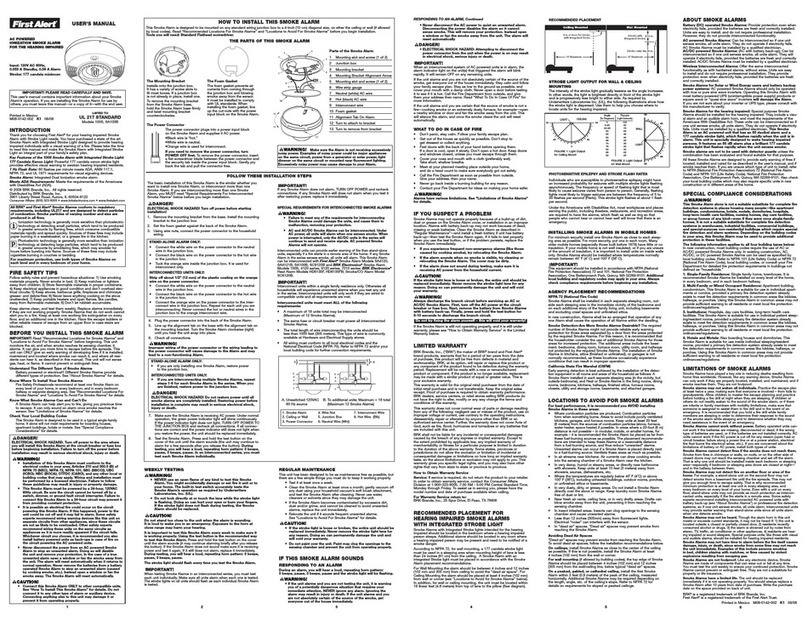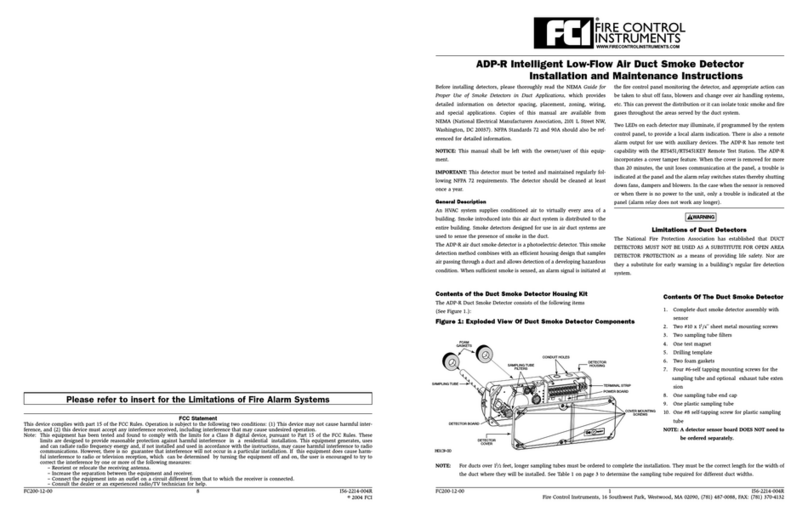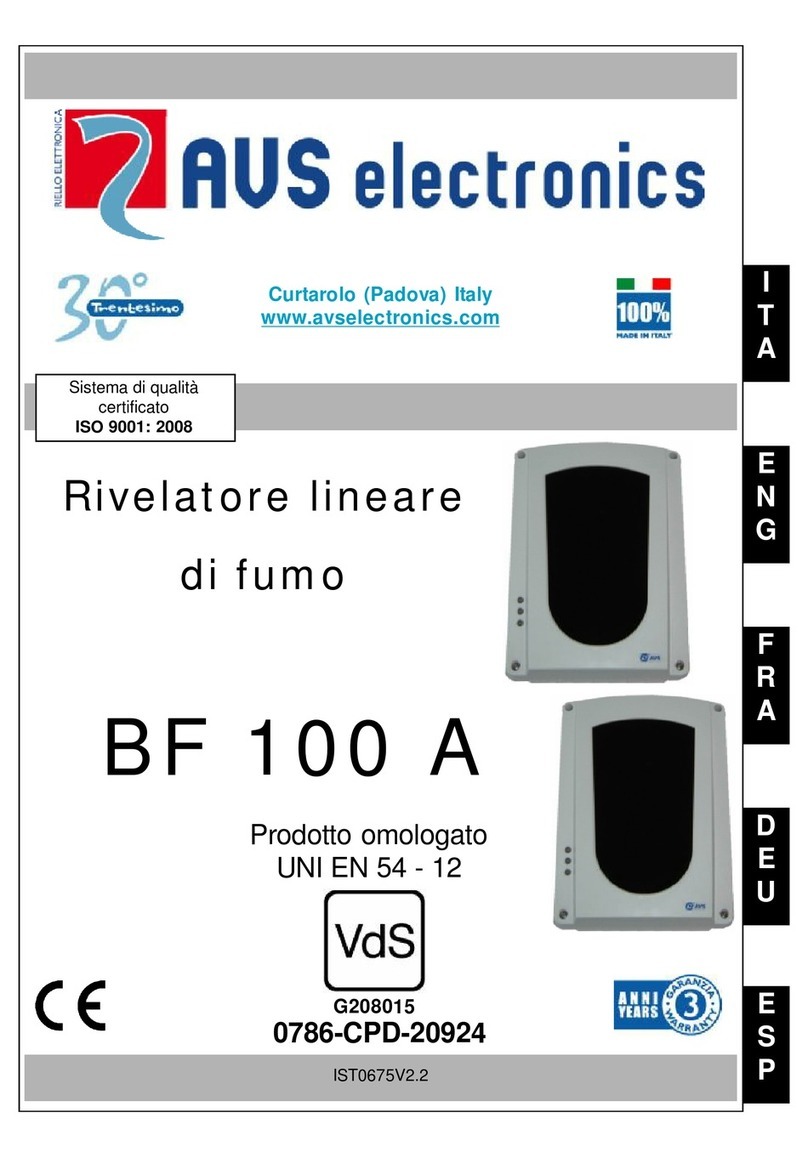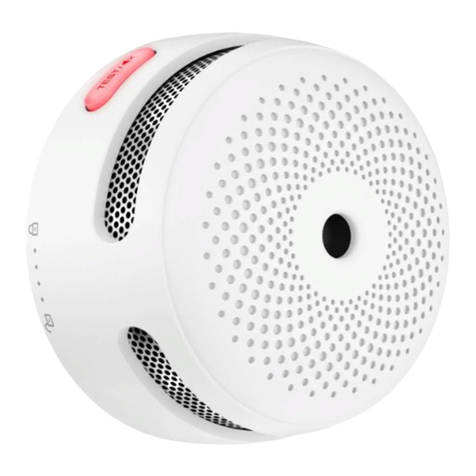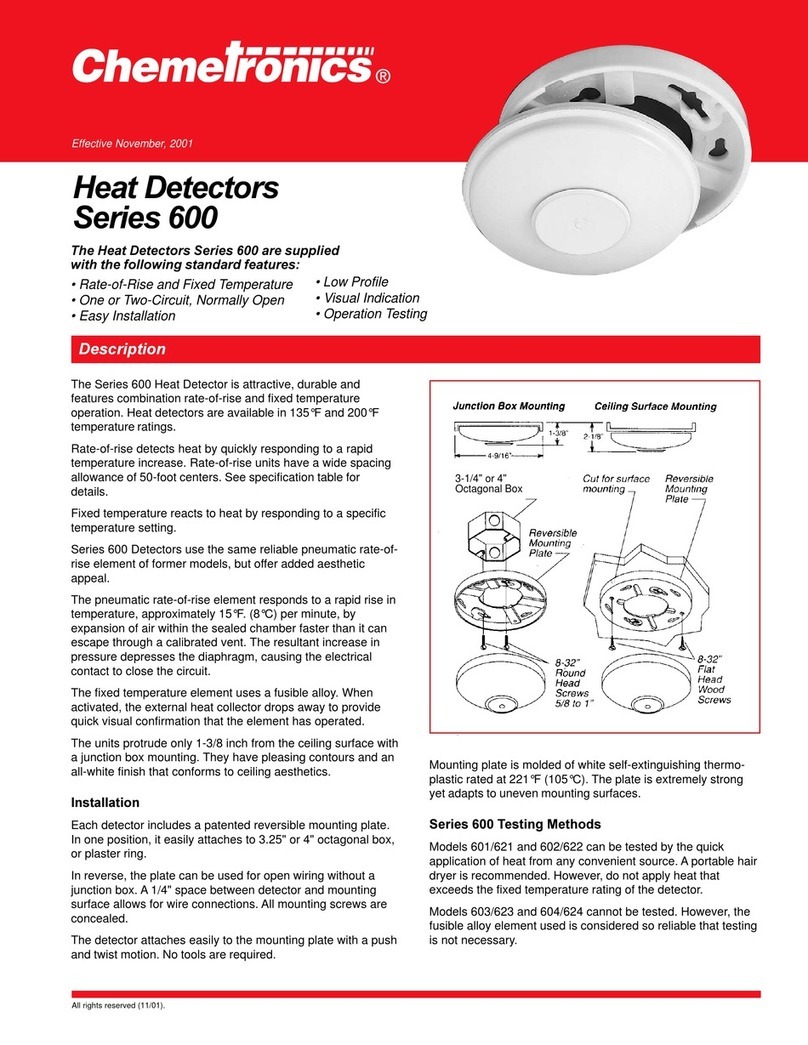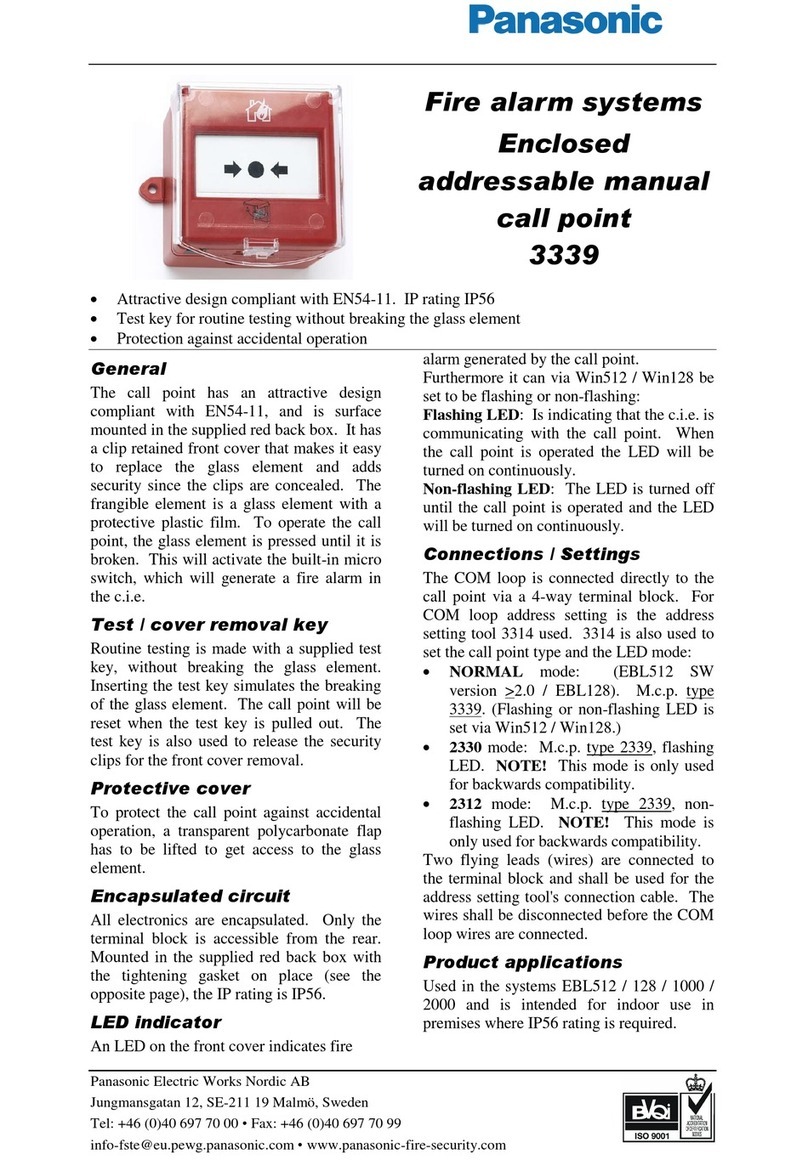
16 Intelligent Products—2551J and 2551TJ Plug-In Intelligent Photoelectronic Smoke Detector
This smoke detector is designed to activate and initiate emergency action,
but will do so only when used in conjunction with other equipment.
This detector is designed for installation in accordance with NFPA
Standards 71 and 72, or equivalent codes and standards specific to
country of installation.
●Smoke detectors will not work without power. Alternating Current
(AC) or Direct Current (DC) powered smoke detectors will not work
if the power supply is cut off for any reason.
●Smoke detectors will not sense fires which start where smoke does
not reach the detectors. Smoke from fires in chimneys, in walls, on
roofs, or on the other side of closed doors may not reach the smoke
detector and alarm it.
●A detector may not detect a fire developing on another level of a
building. For this reason, detectors should be located on every level
of a building.
●Smoke detectors have sensing limitations. Ionization detectors offer a
broad range fire-sensing capabilities, but they are better at detecting
fast, flaming fires than slow, smoldering fires. Photoelectric detectors
sense smoldering fires better than flaming fires. Because fires
develop in different ways, and are often unpredictable in their growth,
neither type of detector is always best, and a given detector may not
always provide warning of a fire. In general, detectors cannot be
expected to provide warnings for fires resulting from inadequate fire
protection practices, violent explosions, escaping gas, improper
storage of flammable liquids like cleaning solvents, other safety
hazards, or arson.
This detector is UL Listed to operate in a maximum air velocity
of 3000 ft/min. Air velocity, along with other factors, may affect
detector sensitivity. See the 1993 NFPA-72-National Fire
Alarm Code, Appendix B for information.
●Test your smoke detector system per NFPA 72-National Fire
Alarm Code, or equivalent codes and standards specific to country of
installation, at least semiannually. Clean and take care of your smoke
detectors regularly. Taking care of the fire detection system you have
installed will measurably reduce your product liability risks.
Limitations
Controls Group FAN 408
507 E. Michigan Street Fire Initiating Devices and Notification Appliances Technical Manual
P.O. Box 423 Printed in U.S.A.
Milwaukee, WI 53201

















